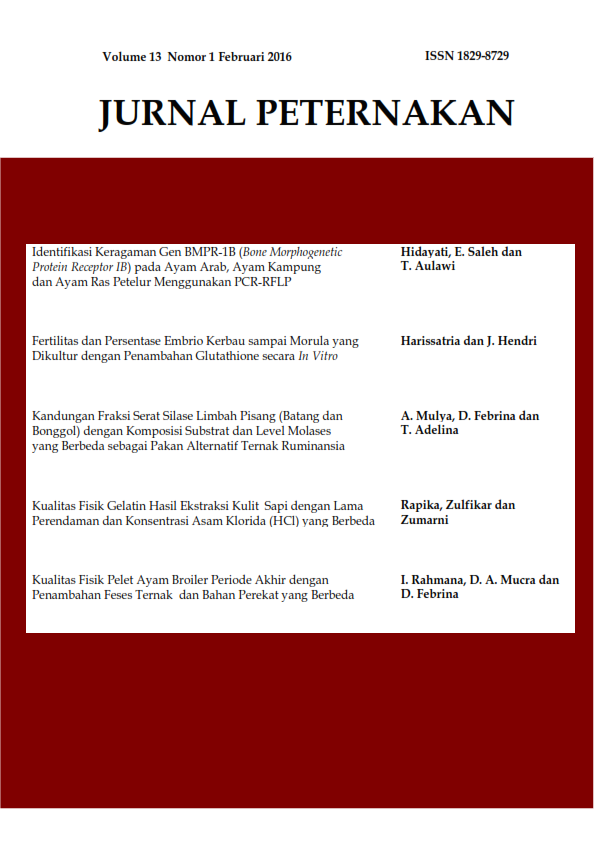KUALITAS FISIK PELET AYAM BROILER PERIODE AKHIR DENGAN PENAMBAHAN FESES TERNAK DAN BAHAN PEREKAT YANG BERBEDA
DOI:
https://doi.org/10.24014/jupet.v13i1.2387Keywords:
feces, adhesive, pellet, bulk density, durability, water content.Abstract
The study aimed to know the physical quality of pellets for finisher period added different feces and adhesive matter. The experiment design was randomized complety block design factorial (RCBD) with two factors and three replications. The first factor was feces (goat feces, cattle feces, buffalo feces) and the second factor was adhesive matter (tapioca flour, eeg white, sago flour). Physical observation were water content, specific gravity, bulk density, compressed bulk density, angle of repose, and the durability of pellet. The result showed that addition type feces influenced water content, specific gravity, bulk density, compressed bulk density, angle of repose and the durability of pellet form. The result showed that addition adhesive matter influenced bulk density, compressed bulk density, the durability of pellet form.Interaction the addition of cattle feces and different adhesive matter in water content, specific gravity, compressed bulk density, angle of repose and the durability of pellet. Interaction buffalo feces and tapioca flour best quality.Downloads
Published
Issue
Section
License
The Authors submitting a manuscript do so on the understanding that if accepted for publication, copyright of the article shall be assigned to Jurnal Peternakan and published by Fakultas Pertanian dan Peternakan Universitas Islam Negeri Sultan Syarif Kasim Riau as publisher of the journal.
Authors who publish with this journal agree to the following terms:
Authors automatically transfer the copyright to the journal and grant the journal right of first publication with the work simultaneously licensed under a Creative Commons (CC BY) that allows others to share the work with an acknowledgement of the work's authorship and initial publication in this journal.
Authors are able to enter into separate permission for non-exclusive distribution of the journal's published version of the work (e.g., post it to an institutional repository or publish it in a book), with an acknowledgement of its initial publication in this journal.
Authors are permitted and encouraged to post their work online (e.g., in institutional repositories or on their website) prior to and during the submission process, as it can lead to productive exchanges, as well as earlier and greater citation of published work (See The Effect of Open Access).

